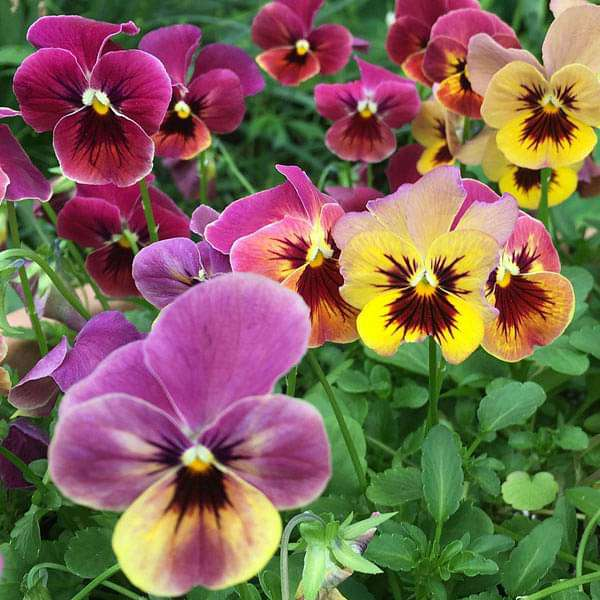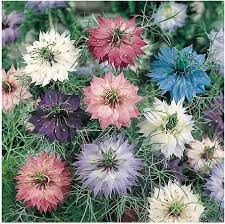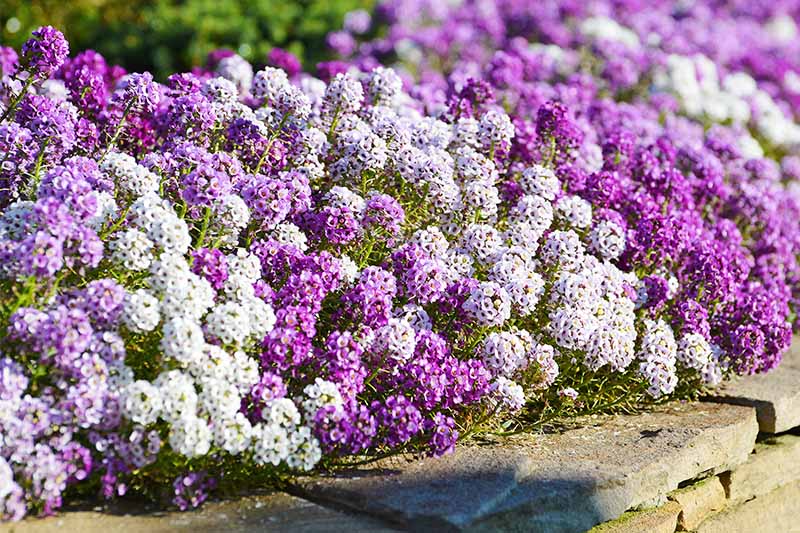By Barbara Pleasant | February 1, 2018
Fruits and vegetables nourish the body, but flowers provide joy for the soul—while also supporting a diverse range of beneficial insects. Each spring, I love planting fast-growing flowers from seed. These plants not only enhance the landscape but also help create a cohesive look in beds and containers. With short germination times and fast, carefree growth, these flowers are perfect for gardeners looking for quick results.
While most annual flowers take about 95 days from seed to bloom, the flowers on this list start to bloom within 60 to 70 days when grown under ideal spring conditions. Many of these blooms are frost-tolerant, and some will even reseed themselves with a little encouragement. To get a head start, I recommend starting seeds indoors in late winter and using cloches to ease them into outdoor conditions.
1. Sweet Alyssum (Lobularia maritima)
Sweet alyssum is a favorite among beneficial insects like hoverflies. These low-growing flowers are perfect for edging beds, containers, or walkways. They come in various colors, with fragrance peaking in the evening, making them a charming addition to any garden.

2. Calendula (Pot Marigold)
Calendula has long been used for its healing properties in skincare and as a cooking ingredient. These fast-growing flowers have broad leaves that quickly fill in spaces. They also make an excellent flowering cover crop, adding beauty while enriching the soil.
3. Johnny Jump-ups (Violas)
Also known as mini-pansies, these hardy flowers can withstand frost and are great companions for spring bulbs. They reseed themselves readily, ensuring a vibrant display year after year.

4. Cornflowers (Bachelor’s Buttons)
Loved by bees, cornflowers bloom early in the summer and are not fazed by unpredictable spring weather. Their edible petals can be used in salads, and their floral water, used to soothe puffy eyes, is gaining popularity in natural skincare.
5. Nigella (Love-in-a-Mist)
Nigella features delicate pastel flowers surrounded by lacy foliage, which matures into intriguing seed pods for dried arrangements. These plants thrive in cool spring weather, adding soft texture to gardens while pairing well with taller flowers.

6. Nasturtiums
Nasturtiums not only brighten up the garden but are also edible and highly attractive to pollinators. Rich in vitamin C, their leaves and flowers can be added to salads or pickled as a caper substitute. They also help deter pests when planted near cucumbers or tomatoes.
7. Annual Phlox (Phlox drummondii)
Native to Texas, annual phlox is a hardy and beautiful flower that thrives even in heat and dry conditions. These flowers attract butterflies with their nectar-rich blooms, making them a must-have in butterfly gardens.

8. Petunias
Petunias are low-maintenance, pest-resistant, and come in a variety of colors. Heirloom varieties like the ‘Old Fashioned Vining Petunia’ or ‘Evening Scentsation’ are especially prized for their delightful fragrance, which is strongest in the evening.
9. Poppies (California and Breadseed Poppies)
California poppies grow quickly, blooming just 60 days after sowing. Breadseed poppies, known for their edible seeds, also grow quickly if started early. Once established, poppies reseed readily and provide bees and pollinators with a much-needed source of protein-rich pollen in early summer.
10. Sunflowers (Helianthus)
Sunflowers are surprisingly cold-hardy and can tolerate light spring frosts. Early-blooming varieties, like ‘Jua Inca’ or ‘Solar Flare,’ mature earlier than traditional sunflowers, providing a cheerful touch to the garden as the days get longer.
Reseeding Tips
Many of these flowers will return each year with minimal effort. To encourage reseeding, use the “pull-and-shake” method: simply pull up the spent plants, shake them where you’d like new flowers, and let the seeds do the rest!
These quick-blooming flowers are a wonderful way to brighten your garden, support pollinators, and enjoy the beauty of nature with minimal wait time.
